Home pigeon out wolf
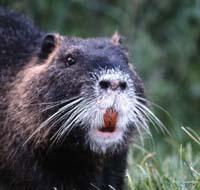
In these cases, in addition, they can end the ecological balance of the invaded ecosystem, discarding the species present. According to experts, biological invasions are currently the third most important cause of biodiversity loss after habitat destruction and fragmentation. In addition to ecological damage, economic damage is frequent.
The best way to treat invasive species is to keep them outdoors, that is, to prevent. When the detection is fast and the species has not yet spread much, there may be a solution, but once the invader has become extended and well fixed, it can be very difficult, if not possible, to remove it.
The GEIB group, expert in biological invasions, compiled in a book last year the 20 most harmful invasive species in Spain. Many of these species also exist in the Basque Country. Some examples are:
Selloana Cortaderia
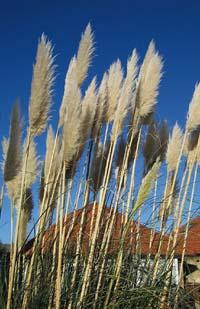
The grass of the pampas is originally South American. Strong and lively. In average conditions, it can reach a diameter of three meters and a height of four meters, and the long and narrow leaves have sawn cutting herbaceous, which explains its scientific name. It blooms between September and October and reproduces with seeds. If you do, you can produce more than 100,000 lintel seeds. These seeds of transport have wind and are able to travel a long way: They can be extended up to 30 km.
In addition, with the characteristics of the earth is not anything petty, neither in pH, nor in structure, nor in food. It supports not very long landings and mature plants even temperatures below -15ºC. And after the fires it becomes strong. With this type of characteristics, the grass of the pampas presents clear advantages over native species and can quickly colonize lands that have been vacant and altered.
XIX. It arrived in Europe in the mid-twentieth century and there are two main hypotheses: engineers may have introduced it to avoid detachments or the Indians bring it as an ornamental plant. Since then, this plant has had various uses: anti-fever medicinal plants, forage plants, raw material for the basketwork... and has also been used to stabilize lands and create barriers on the margins of industrial roads and polygons.
In many places the grass of the pampas has become a dominant species, especially on the coast. It colonizes open habitats and occupies the place of native species. In addition to directly affecting the loss of biodiversity, the risk of fire increases. However, the seeds of this elegant plant are available to everyone.
Robinia pseudoacacia
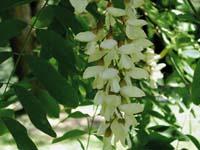
Deciduous tree that can reach a height of 25 meters and capable of generating seeds at six years. These seeds can last up to 10 years, and when conditions are adequate, new plants can grow by one meter per year. However, asexual reproduction through altitudes that leave the roots is more important to colonize new places.
The false acacia is a pioneer plant, of luminosity, little competition and requires a good drainage. But it can live on all kinds of land and resist great droughts. In addition, it can fix nitrogen by micorrizes, which increases its colonization capacity.
It appears completely naturalized in the margins of roads and roads, slopes and margins of rivers. Due to its high growth rate and fertility, the false acacia displaces native species. It generates an immediate shade that prevents the development of native plants. In addition, it can provoke competition in pollination, since the aromatic flowers of the false acacia attract the pollinating insects.
Dreissena polymorpha
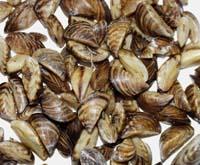
The zebra mussels have been popularized recently for their presence in waters of Euskal Herria. In Alava, in the area of Sobrón and in Navarre, in the Arga River, this mollusk originating in the Pontaspóric region (Black Sea, Caspian Sea and Aral Sea) has appeared. Thanks to the navigation has spread throughout Europe and North America.
It is a small mussels of three centimeters in length that is due to the dark and clear bands with zigzag on the shell. It lives mostly in sweet waters, although it also tolerates brackish. And it prefers inert, low-current waters.
Females can start at two years and proliferate almost every month. A few days after egg laying, planktonic larvae of easy dispersion are born. A zebra mussels can produce one million descendants a year.
This high fertility allows a rapid expansion. In a lake of the Great Lakes of North America there were 200 mussels/m 2 in 1988; the following year there were already 4,500. In another lake, 750,000 mussels/m 2 were reached in a few months.
The ecosystem can completely alter zebra mussels. It feeds on phytoplankton and makes direct competition to animals that have the same food. Increases the amount of organic matter and decreases oxygen. It also causes the loss of native bivalves, growing on them. By occupying all surfaces (substrates, stones, plants, infrastructures...) it produces great ecological imbalances and the accumulation of thousands of valves totally alters the characteristics of the substrate. Finally, it can cause economic losses, since it can clog infrastructure pipes, sinks, etc.
Procambarus clarkii
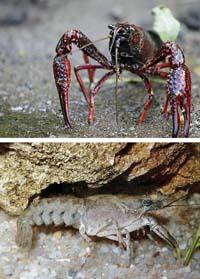
The American river crab has been widely used in aquaculture and currently has a global extension. It was intentionally introduced into the peninsular rivers, for exploitation purposes, when the autochthonous crab population (Austropotamobius pallipes) was reduced by overfishing and habitat destruction. And that was the finishing line for his own. In fact, the American is the carrier of the fungus Aphanomyces astaci, a deadly disease for the autochthonous.
On the other hand, it also produces more damage to the invaded ecosystem. When drilling the substrate, it transforms the medium and when it appears in high densities it can unbalance the trophic chain, affecting the productivity of the ecosystem. It produces the loss of aquatic plants, as well as some species of fish and amphibians.
Mustela vison
The American vison is a semi-aquatic carnivore of elongated body. It lives in rivers, streams, lakes and reservoirs, especially in areas of great vegetation. It is carnivorous, but sometimes it also eats fruits and excrements, being solitary and territorially. It reproduces once a year and can have between 4 and 6 offspring each time. Young visons reach sexual maturity in 10 or 11 months.
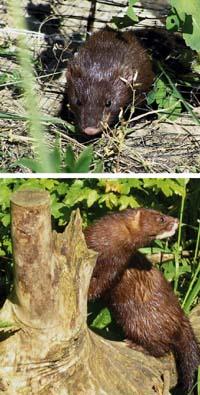
The species, native to North America, is brought for the furry and is currently settled in many European countries and in South America. It was brought to Europe in the 1920s, and after naturalizing the specimens escaped from the farms, it has spread naturally.
In this case, the main victim has been the local European vison (Mustela lutreola). Both share the same habitat and way of life, but the American is bigger and more aggressive, has greater hopes and also males can cover European females. In the latter case, unviable embryos are generated that do not copulate again. In addition, the American vison is a carrier of diseases affecting Europe, such as parvovirus of Aleutian disease (ADV), an incurable disease for European visons.
Myocastor coypus
This rodent, 60 cm long and 6 kg of weight, was also brought from South America for leather. Since the end of the twentieth century and especially XX. in the third decade of the twentieth century. Thanks to the leaks and abandonments that occurred when they lost their economic value, today it is present in more than 30 European countries. In Euskal Herria it is increasingly abundant and can be seen in the rivers Bidasoa and Oiartzun, Baztan and Leitzaran, among others.
The tale is shaped like a big mouse, is aquatic and forms small colonies. It reproduces throughout the whole year and can reach 2-3 growths a year. Maturity reaches six months.
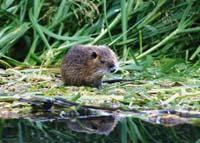
On the other hand, it can also cause losses in agriculture and significant damage to infrastructure. It is because, due to its custom of aztalizing, it destroys the rivers, colmata the channels, destroys the infrastructures and increases the risk of flooding.
In Italy, it was estimated that it caused losses of 14 million euros between 1996 and 2000.
Buletina
Bidali zure helbide elektronikoa eta jaso asteroko buletina zure sarrera-ontzian











